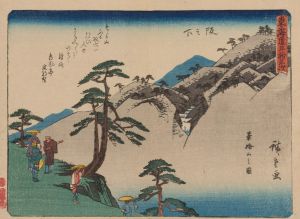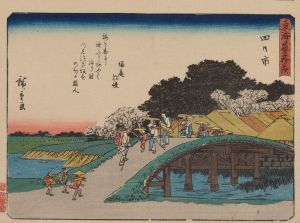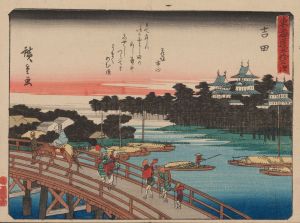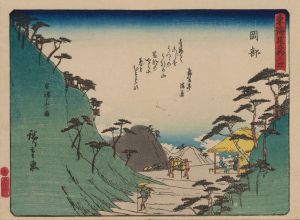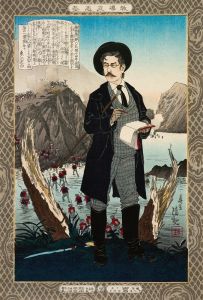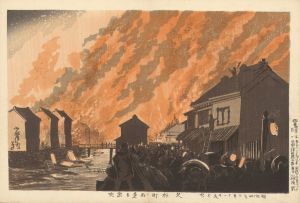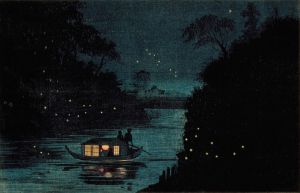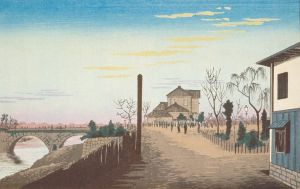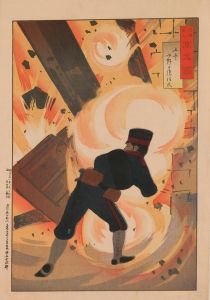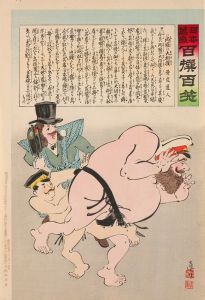
Satta Pass on the Tōkaidō
A hand-painted replica of Kobayashi Kiyochika’s masterpiece Satta Pass on the Tōkaidō, meticulously crafted by professional artists to capture the true essence of the original. Each piece is created with museum-quality canvas and rare mineral pigments, carefully painted by experienced artists with delicate brushstrokes and rich, layered colors to perfectly recreate the texture of the original artwork. Unlike machine-printed reproductions, this hand-painted version brings the painting to life, infused with the artist’s emotions and skill in every stroke. Whether for personal collection or home decoration, it instantly elevates the artistic atmosphere of any space.
Kobayashi Kiyochika (1847–1915) was a prominent Japanese artist known for his ukiyo-e woodblock prints and paintings, particularly those that depicted the rapid modernization of Japan during the Meiji era (1868–1912). His works often combined traditional Japanese artistic techniques with Western influences, reflecting the cultural and technological changes of the time.
"Satta Pass on the Tōkaidō" is one of Kiyochika's notable works, showcasing his skill in landscape art and his ability to capture the interplay of light and shadow. The Tōkaidō, a historic road connecting Edo (modern-day Tokyo) and Kyoto, was a frequent subject in Japanese art, particularly during the Edo period. Satta Pass, located in modern-day Shizuoka Prefecture, is a scenic spot along this route, offering dramatic views of Suruga Bay and Mount Fuji. The location was celebrated for its natural beauty and was often depicted by earlier artists, such as Utagawa Hiroshige in his famous "The Fifty-Three Stations of the Tōkaidō" series.
Kiyochika's depiction of Satta Pass reflects his unique artistic style, which was heavily influenced by Western techniques such as perspective and chiaroscuro (the use of strong contrasts between light and dark). Unlike the bright and colorful prints of earlier ukiyo-e masters, Kiyochika's works often feature subdued tones and atmospheric effects, emphasizing mood and the passage of time. This approach earned him recognition as a master of "light and shadow" in Japanese art.
While specific details about the creation date or series context of "Satta Pass on the Tōkaidō" are not readily available, the work is consistent with Kiyochika's broader artistic themes. It likely belongs to his later period, during which he focused on landscapes and scenes of natural beauty, often infused with a sense of nostalgia for Japan's pre-modern past.
Kiyochika's art provides valuable insight into the cultural and artistic transitions of the Meiji era. His works, including "Satta Pass on the Tōkaidō," remain significant for their innovative blend of traditional Japanese aesthetics and Western artistic influences, as well as their documentation of a rapidly changing Japan.





